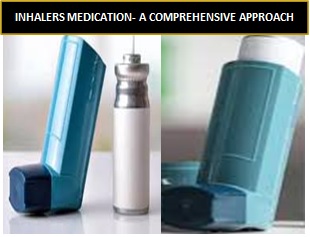Understanding Wet Granulation: How Granules Form
This article explains about Granules Formation mechanism in wet Granulation Techniques , its Advantages and Disadvantages, Different types from which method wet granulation can be made and frequently asked questions.
Understanding Granules Formation mechanism in wet Granulation Techniques
What is Mean by Wet Granulation ?
It is a process used in the pharmaceutical industry to create granules by adding a liquid binder to a powdered material. The process involves mixing the powder with a liquid binder and then forcing the mixture through a screen to create granules of a desired size. The granules are then dried to remove any excess moisture and improve their physical properties and further it is sieved with the desired sieves to get the specified size granules.
Here we will see the mechanism of the Granules Formation in wet granulation process where liquid binder is using for the formation of Granules.
Granules Formation Mechanism and its Phases in Wet Granulation :
Particle-Bonding Mechanism :
To form Granules, physical/chemical bonds must be formed between particles so that they adhere. These bonds must be sufficiently strong to prevent breakdown of the granule to powder in subsequent handling operations till compression.
There are five primary bonding mechanisms between particles as below :
- Interfacial forces in mobile liquid films within the granules.
- Mechanical interlocking between particle to particle
- Adhesion and cohesion forces in the immobile liquid films between individual primary powder particles.
- The formation of solid bridges after solvent/Water evaporation;
- Force of attraction between solid particles
In further details granules formation is classified in Three Phase :
Phase I — Nucleation :
Granulation is initiated when particles come into contact and adhere to each other through liquid bridges, eventually forming a pendular state as additional particles join in.
Phase II — Transition :
There are two ways in which nuclei can grow: by adding single particles through pendular bridges or by combining two or more nuclei, which will subsequently be altered/Changed by the bed’s agitation.
Phase III : Ball growth :
The process of granule growth results in the formation of large, spherical granules, causing the mean particle size in the granulation system to progressively increase over time due to the effects of agitation.
Image I : Schematic Diagram of Agglomerates/Granules Formation Procedure
Advantages of Wet Granulation
This granulation technique offers several advantages over other granulation methods. Some of the key benefits are:
- Improved flow and compressibility properties
- Increased dissolution rate and bioavailability of active ingredients
- Get Specified granule size as per requirement.
- Reduced variability and batch-to-batch variation
- Easy scale-up and transfer to production
Disadvantages of wet Granulation
Despite its advantages, this granulation technique has some limitations and challenges. Some of the enlisted as below,
- High capital and operating costs
- Limited suitability for heat-sensitive or moisture-sensitive materials
- Difficulty in achieving narrow particle size distribution.
Types Of Wet Granulation :
It can generally divided on the basis of manufacturing process/Method of granulation :
- Wet Granulation by Planetary Mixer : Planetary Mixer Uses Rotating blade to mix the Powder and Binder
- Wet Granulation by Rapid mixer granulator (RMG)/High shear mixer Granulator (HSMG) : RMG uses a high-speed Agitator and chopper to mix the powder and binder
- Wet Granulation by single pot processor i.e. Fluidized Bed Equipment (FBE) : In FBE spraying of binder onto the fluidized powder bed
Frequently Asked Questions (FAQs)
Why is wet granulation used in pharmaceuticals?
Wet granulation is used to transform fine powders into free-flowing, uniform granules that are easier to handle, dose, and compress into tablets or fill into capsules.
What is the role of the liquid binder in wet granulation?
The liquid binder wets the powder particles, causing them to stick together and form granules. It also helps in distributing the active ingredient evenly in the mixture.
Can any liquid be used as a binder in wet granulation?
No, not just any liquid can be used. Pharmaceutical manufacturers carefully select binders based on factors like solubility, compatibility, and the intended use of the final product. Common binders include water, alcohol, and various solutions.
How is moisture control important in wet granulation?
Precise moisture control is crucial. Too little moisture may not facilitate granule formation, while too much moisture can lead to problems like over-granulation or sticking.
Is wet granulation the only method for creating granules in pharmaceutical manufacturing?
No, dry granulation methods, like roller compaction, are also used. The choice between wet and dry granulation depends on factors such as the formulation and the desired characteristics of the final product.




